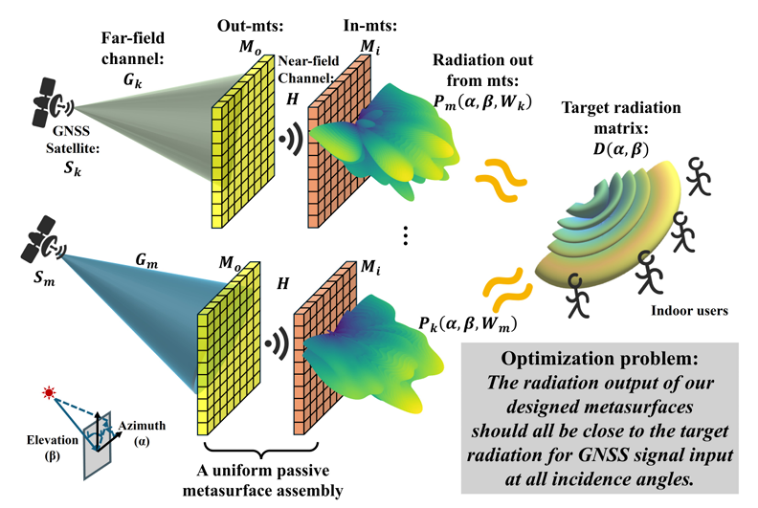Metasurfaces: A New Era for Wireless Technology
As demand for faster and more reliable wireless communication escalates, traditional systems are struggling to keep pace. To overcome these limitations, researchers are exploring innovative ways to control electromagnetic waves, focusing on materials known as metasurfaces. These engineered materials can manipulate wave propagation in unprecedented ways, offering a promising path to improve wireless performance and efficiency. This post dives into the exciting applications emerging from this technology.

Optimizing Indoor Positioning with Metasurfaces for GNSS
While the Global Navigation Satellite System (GNSS) excels at outdoor positioning, its indoor performance is often hampered by signal interference and blockage. To combat these challenges, alongside existing solutions like Wi-Fi and Bluetooth, researchers are leveraging the potential of GNSS signals by developing metasurface systems. Using metasurfaces, engineers can capture and redirect more GNSS signals, enabling them to enter buildings more effectively by allowing signals to enter buildings in a path parallel to the ground to achieve broader coverage.
To this end, researchers developed a GNSS positioning metasurface system (GPMS) that uses passive metasurface technology. The system is based on a two-layer metasurface structure. To enable effective guidance of signals from different angles, the team developed new algorithms allowing signals to pass through metasurfaces, using them as anchor points. Like virtual satellites, the system uses at least three metasurfaces indoors to achieve high-precision positioning via a triangulation algorithm.

Deployment of the GPMS with six metasurfaces on a 10×50 meter office floor and a 15×20 meter conference hall yielded impressive results. The signal-to-noise ratio (C/N₀) increased significantly, as did the number of visible satellites. Positioning errors were also drastically reduced, highlighting the feasibility and advantages of GNSS-based metasurfaces for indoor applications.
Extending Millimeter-Wave Coverage
Millimeter waves are critical for the high-speed, low-latency performance required by 5G and 6G communication systems. While commercial products utilizing these waves are becoming more common, their limited range and susceptibility to obstruction present challenges. Metasurfaces offer an alternative approach to improve millimeter-wave applications.
To optimize coverage and overcome these limitations, researchers developed the AutoMS automation service framework. This framework uses low-cost passive metasurface designs and carefully planned placement strategies.

Key components of AutoMS include automated joint optimization of phase settings, metasurface placement, and access point positioning. Fast 3D ray tracing simulators and low-cost passive metasurface design also support the project. The team’s design approach allows users to capture environment details using 3D scanning apps, generate a layout model, and upload it to the cloud. AutoMS then generates metasurface settings and placement guidance.

Evaluation of AutoMS demonstrated that it enhances millimeter-wave coverage across various scenarios. Compared to a single router, the system increased signal strength significantly. Onsite tests produced gains in target areas as well as blind spots, increasing signal throughput. AutoMS offers flexibility in different environments, critical for ensuring reliable performance in real-world applications.
Improving Microwave Oven Heating with Metasurfaces
Microwave ovens often heat food unevenly, leading to cold spots and potentially unsafe conditions. Uneven heating can also damage food by creating hot spots and unevenly cooking food. To improve this, researchers developed MicroSurf, a low-cost metasurface solution that optimizes heating by controlling electromagnetic energy inside the oven.

Testing across multiple microwave oven brands shows that MicroSurf effectively improves heating across different foods. MicroSurf focuses heat on specific areas and adapts for different food shapes. This innovation could lead to smarter and more efficient home appliances.
The Future of Wireless Innovation
These advancements demonstrate the potential of metasurface technology to reshape wireless communication and sensing. As research continues, we can expect even more innovative applications to emerge, transforming how we interact with technology in the years to come.


